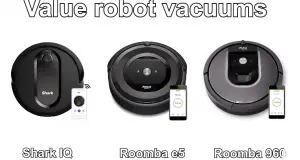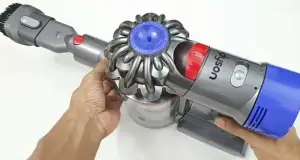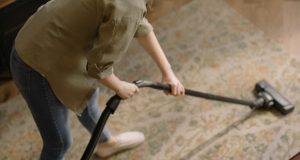Is Your Vacuum Filter Dirty?
Vacuum cleaners are an absolute necessity for clean and tidy homes, offices, malls and automobiles. And the name Hoover comes to mind of anyone whilst thinking of neat indoors. Come to think of it, a person spends all of its time in those places. He is either laying on his back on his home bed. Or she is working on her new graphic design assignment in her carpeted office. A driver is busy hailing passengers to and from the airport and is always happy to hear that his car is immaculately clean. The cinema inside the shopping mall has its supervisor instructing new interns to clean all the debris left by avid movie watchers.
Cleaning Hoover Vacuum Filters
In this blog, I will go over complete instructions for cleaning and maintaining vacuum filters to ensure they operate for a lifetime. Now, vacuum cleaners come in all shapes and sizes with all kinds of configurations. But, they all have common parts to them including a motor, a power cable, a suction hole, a filter and a bag for storing all the dirt that has been collected.
Regular Cleaning of Hoover Vacuum Filters
Regular cleaning of vacuum filters is very important for maintaining the suction power and improving the indoor air quality. Prolonged use of a dirty filter would leave you smelly interiors and your vacuum cleaner not operating optimally for its sole purpose.
So dive in to know all about keeping the vacuum cleaners filters clean and ever ready to make your living spaces cleaner.
As mentioned previously, vacuum cleaners come in all kinds of shapes and sizes and these shapes allow for different kinds of filters. I will briefly touch upon the most common types of filters and tell you how to clean them.
Bag Filters
Bag filters are the most common type of filters in vacuum cleaners. It is a filter in the shape of the bag. So, it serves both as a filter and a collection. Clever! This filter is connected to the outlet of the suction hole inside the body of the cleaner. It collects all the debris collected by the cleaner. Some vacuum cleaners have a small indication on the outside of the cleaner letting the user know that her vacuum cleaner filter is full and it needs emptying before further vacuuming can be done. The bags are usually made of cloth or paper. Paper ones are disposable. You use them once and then discard the debris along with the bag. Cloth filters are more durable and have a longer life. They can be washed with water along with mild soap solution to ensure continuous cleaning. Bag filters will have reduced capacity to hold debris over a long period of time as regular cleaning can cause its interior threads to undergo a lot of wear and tear. It may be time to replace the bag filter.
Foam Filters
Stand alone foam filters are rare but they are out there in many vacuum cleaners as an integral part of its design. Foam filters prevent large dust particles, threads and hair, both human and pet, from entering the inside of the collector. At times foam filters serve as secondary filters for bag filters and vacuum cleaners ensuring thorough cleaning. Foam filters are mostly washable vacuum filters. To clean them, just prepare a soap solution and dip the foam inside the bucket. Foam will absorb all the soapy water. Pull out the foam from water and squeeze the dirty water out. Repeat this several times and lastly do this a couple of times with fresh lukewarm water. There, you have got yourself a squeaky clean foam filter. Foam filter will lose its elasticity over many cycles of cleaning and may need replacement.
Disk Filters
Disk filters are small in size, shaped like coffee filters, made of cloth or paper and function just like a bag filter. D-filters are mostly part of small vacuum cleaners such as cordless designs for automobiles for hard to reach areas or robotic vacuum cleaners. As with the bag filter, paper disk filters are disposable and one time use only whereas cloth disk filters require regular cleaning. Pressurized air can simply be blown at them to clean disk filters. Or one can use the tried and true method of soapy water. Place the filter in an open dry atmosphere to make it ready for the next scheduled cleaning.
Cartridge Filters
Cartridge filters are as common as bag filters. They have filled paper or synthetic material plates functioning as a filtering component. If you have ever seen a car air filter, you know what I am talking about. The larger surface area of the cartridge filter allows for deep cleaning. They can be cleaned by blowing air at them. After repeated use over a period of time, you may find them slightly discolored. This indicates that it is time for you to replace the cartridge filter.
Cyclonic Action
Cyclonic action is just movement of air in a cyclone shape inside a chamber due to its shape and is not a filter per se. It just traps debris in the eye of the cyclone at the bottom of the chamber or on the sides of the cyclone before it enters the filters. So, all the dust is collected but not all of it reaches the filter, improving the filter’s life.
HEPA Filters
HEPA stands for high-efficiency particulate filter. All the filters described above cannot deal with micro dust particles. They are good for larger pieces but fail miserably at particles one millionth of a meter. HEPA filters have special miso-fibers and electrostatic field which helps collect 99.7% of tiny, naked to eye dust particles, escaping the cleaner. HEPA filters are non-washable filters and they need special care while using and storing. They last a lifetime with proper care.
Activate Charcoal
Charcoal has an uncanny ability to absorb odor. A lot of interiors have unfortunately some bad odor associated with it due to some other operation being carried out in that area. Activated charcoal filters help keep the air fresh and sanitized. If one is allergic to odors or has pets, activated charcoal filters work best. Such filters need regular replacements as they get soaked by all odors. Such filters, unfortunately, cannot be washed.
Few Things to Keep in Mind
A few things to keep in mind when cleaning filters. First, make sure the cleaner is powered off and the power cable is unplugged from the source. Second, do the cleaning in a well lit, open air, away from the are which you just cleaned. Third, a lot of filters can be dry cleaned as well. That is, there is no need to use soapy solution. Small taps on the brim of trash can would do the trick. All the dust would fall off the filter directly in the trash can.
Now you know all about cleaning and washing hoover vacuum filters, be they hoover vacuum filters or some other brand. You can use the information laid out in this blog to make sure that your family, employees and customers are breathing and enjoying life in a safe and healthy atmosphere.





